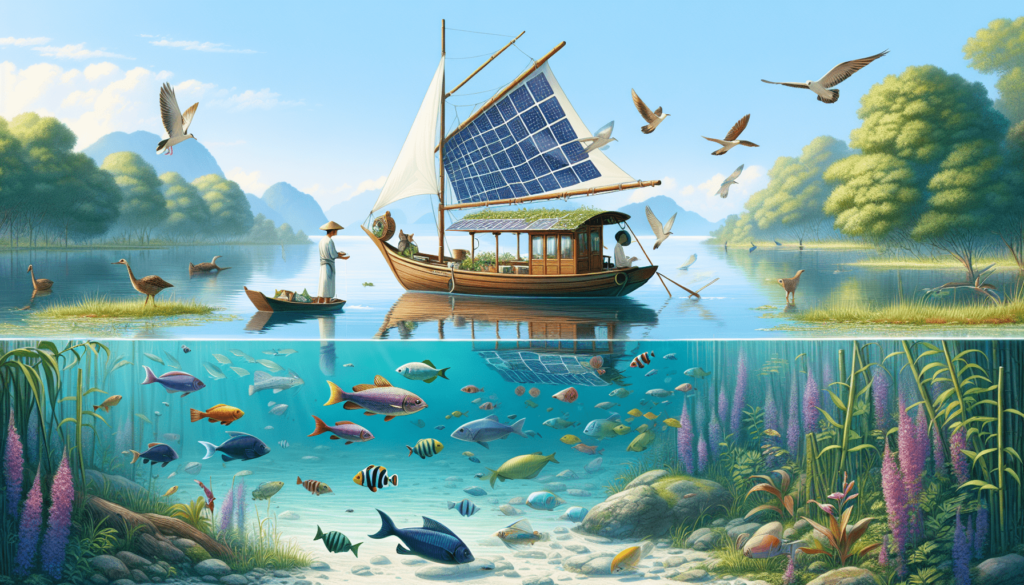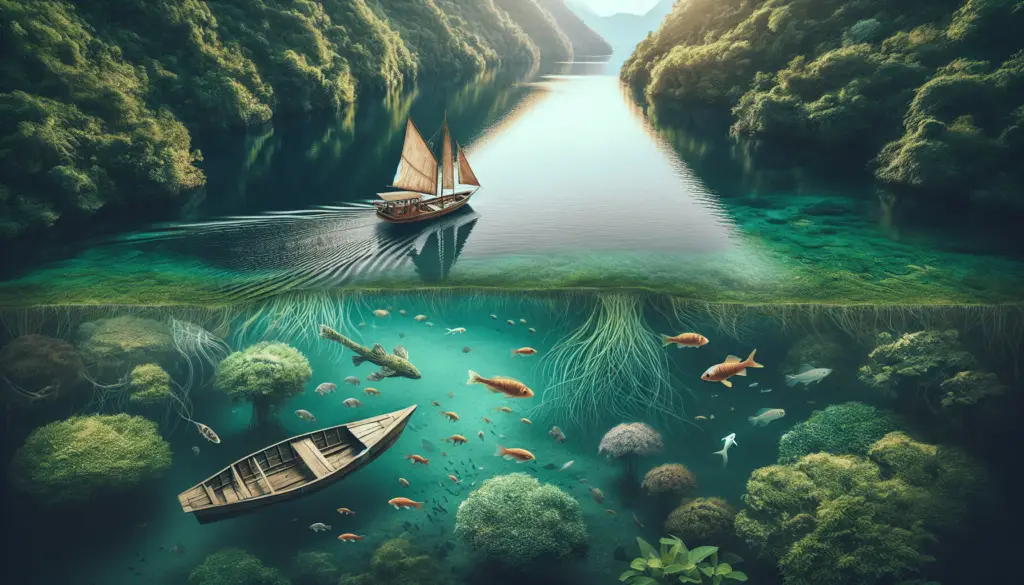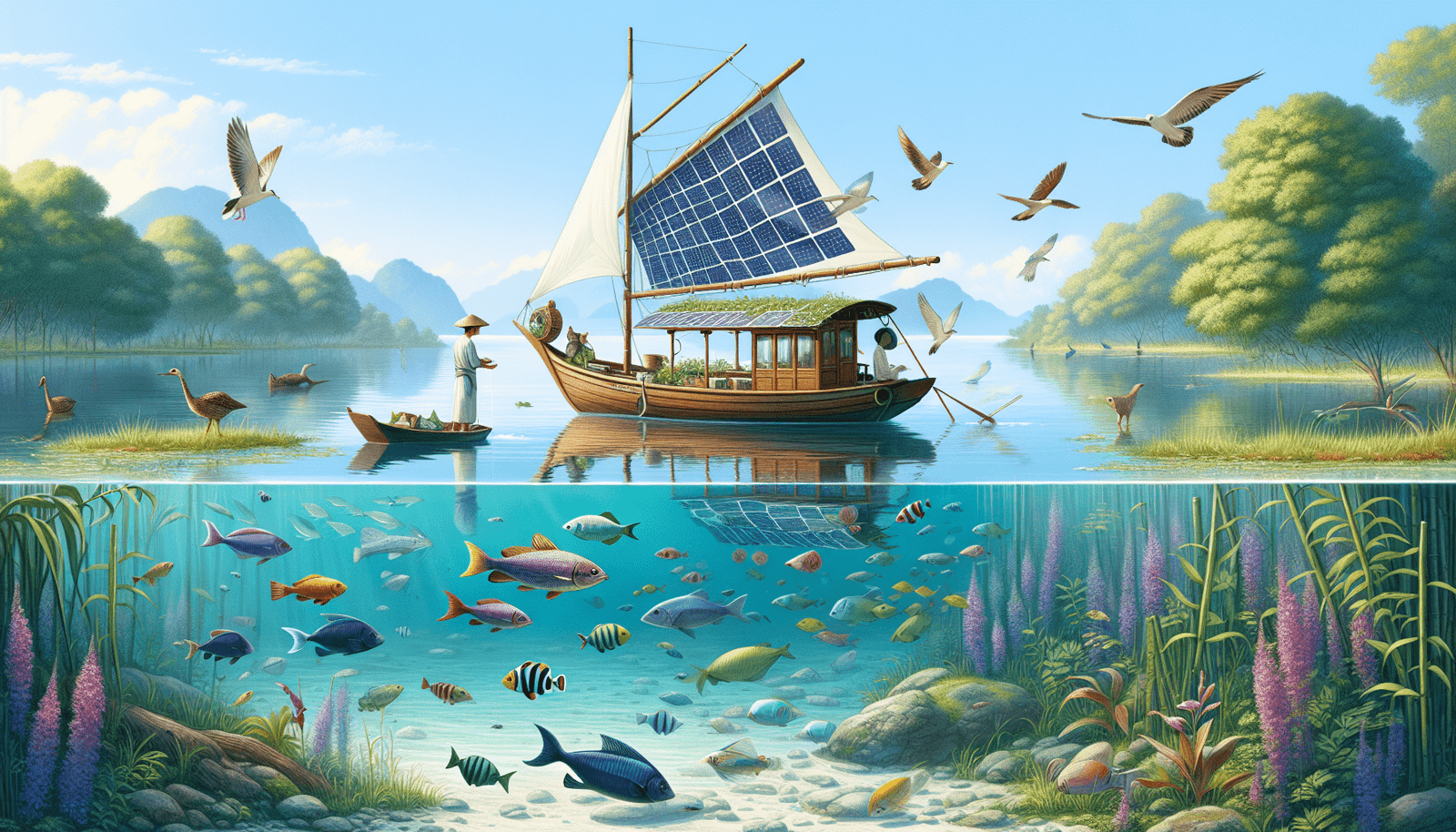Isn’t it amazing how a simple boat ride can have a significant impact on the wildlife around us? “Creating A Wildlife-Friendly Boating Environment” is an article designed to instruct you on ways to ensure that your boating excursions are enjoyable, yet conscious of the flora and fauna that share our waters. The piece is chock-full of practical tips and strategies that, when applied, can drastically reduce your carbon footprint and harm to ecosystems. Boating doesn’t have to be an activity that disrupts wildlife; quite the contrary, it can be an opportunity to admire and respect the unparalleled beauty of nature in a responsible and sustainable manner.
Understanding The Impact of Boating on Wildlife
Boating is a popular recreational activity appreciated and enjoyed by many. It’s a way to escape the hustle and bustle of city life and connect with nature. However, it’s important to know that boating, if not done responsibly, can have a significant negative impact on wildlife.
Identifying potential hazards for wildlife due to boating
Boating can pose many hazards to both terrestrial and marine wildlife. These potential hazards include physical injuries from boat collisions, noise pollution, and toxic waste from fuel and other pollutants. Seabirds are often disturbed during their feeding periods, and can be injured by fishing lines and hooks. Mammals like dolphins, seals and manatees can be killed or severely injured by boat propellers. Thus, it’s super important that we take the necessary measures to mitigate these risks.
Effects of boat noise on marine and terrestrial wildlife
Boat noise is a significant impact of boating on wildlife. The noise from engines can scare away wildlife and disrupt their normal behavioral patterns. It can interfere with their communication and navigation skills, and it can also play a significant role in driving some species away from their accustomed habitats. Terrestrial wildlife, like roosting birds and shoreline animals, are also disturbed by the noise and activity of boats.
The impact of fuel spills and other boat-related pollution on ecosystems
Fuel spills from boats are a major threat to marine ecosystems. They can contaminate water, suffocate fish and other marine creatures, destroy marine plant life, and spoil shorelines. Bigger spills can cause large scale destruction, killing numerous marine life and damaging the ecosystem in the long run. Other boat-related pollution includes garbage and sewage disposal from boats, which impact water quality and marine life significantly.
Boating Rules and Regulations for Protecting Wildlife
Awareness of rules and regulations regarding boating can help minimize your impact on wildlife. They are designed to protect wildlife from the harmful effects of boating and encourage a safe and responsible behavior among boaters.
International and national regulations to follow
Different countries have their own set of laws when it comes to boating and wildlife protection. Internationally, various conventions and treaties aim to protect marine life from pollution and other hazards. Familiarizing yourself with these regulations ensures that you boat responsibly and play a part in conserving wildlife.
Understanding marine protected areas and no-wake zones
Marine protected areas (MPAs) and no-wake zones are established to protect critical wildlife habitats. MPAs are habitats reserved by law or other effective means to protect marine life and their habitats. In no-wake zones, boats are required to maintain the minimum speed to stop the creation of harmful wakes. Boating within these zones should be done thoughtfully and respectfully.
Compliance with seasonal restrictions and closures
Seasonal restrictions may be in place for certain water bodies during specific periods of the year. These are often to protect breeding and feeding sites during important times in different species’ lifecycles. Compliance with these restrictions is critical to ensuring their protection during these sensitive periods.

Eco-Friendly Boating Practices
Eco-friendly boating refers to adopting practices that minimize the impact of boating on the environment and wildlife. It encompasses a variety of behaviors, from respecting local rules and regulations to adopting clean boating practices.
Adopting slow speed in wildlife-rich areas
Minimizing your speed in wildlife-rich areas is an effective way of reducing the disturbance to wildlife and their habitats. It reduces the potential for collisions with aquatic animals and prevents the disturbances of nesting birds and other shoreline animals.
Avoiding direct encounter or disruption of wildlife
Respecting wildlife’s space is crucial when boating. It’s essential to maintain a safe and respectful distance from all wildlife, below or above the water surface. This will ensure that you’re not interfering with their natural behavior, feeding, or nesting activities.
Proper disposal of waste and recycling on board
Ensuring that all trash and waste materials from your boating trip are properly disposed of or recycled is an essential part of eco-friendly boating. This will prevent contamination of the water bodies and their surrounding environments, and will make sure you’re doing your part to keep the ecosystems healthy.
Sustainable Boating Technology
Sustainable boating technology or green boating aims at reducing the environmental impact of boating through innovative and eco-friendly designs and technologies.
Using eco-friendly boat designs
Eco-friendly boat designs incorporate principles of sustainability, minimalism, and efficiency, often using lightweight, recyclable materials, and having fuel-efficient engines. These designs aim to reduce the energy consumption, noise level, and the overall footprint of boating on the environment.
Adoption of electric, hybrid and solar boats
Electric, hybrid, and solar boats are among the cutting-edge technologies that can significantly reduce the environmental impact of boating. They minimize noise, carbon emissions, and are powered through renewable energy sources like the sun, reducing their overall contribution to pollution.
Effective noise reduction technology for boats
Noise reduction technology for boats is becoming increasingly popular as the impact of noise pollution on wildlife continues to gain attention. These technologies help reduce the sound generated by engines and thereby help in minimizing disturbance to wildlife.

Educating Boaters of Wildlife Conservation
Education and awareness are crucial to drive responsible boating and contribute to wildlife conservation. Initiatives can range from certification programs to awareness campaigns.
Role of certification programs in promoting wildlife-friendly boating
Certification programs can play an important role in promoting responsible boating. They can provide training for boaters on how to minimize their impact on the environment, integrate best practices and sustainability into their operations, and comply with both national and international regulations.
Community involvement and awareness campaigns
Community involvement is essential for building a strong base of responsible boaters. Awareness campaigns can spread information about the importance of wildlife, the impact of irresponsible boating, and the ways in which boaters can contribute to conservation.
Creating brochures, guides and online resources for boaters
Creating resources such as brochures, guides, and online materials for boaters can help them better understand how to mitigate their impact on wildlife. These materials can include information on eco-friendly boating practices, local wildlife, and relevant rules and regulations, among other topics.
Coexistence With Marine Mammals
Understanding and adopting practices that promote coexistence with marine mammals are crucial. These include understanding their behavior, viewing them responsibly, and assisting in their conservation.
Understanding mammal migratory patterns
Understanding mammal migratory patterns is key to minimizing disturbances and possible collisions. These patterns can govern everything from when animals are present in specific areas, to their behavior and movements when they’re there.
Adhering to viewing distance regulations
Maintaining a respectful distance from marine mammals is vital when observing their behavior from your boat. These regulations help ensure that these animals can continue their natural behaviors even in the presence of boats, thereby preventing unnecessary distress.
Reporting sightings of injured or entangled animals
If you encounter an injured or entangled animal while boating, it’s important to report it to the local wildlife authorities. They can then take appropriate and swift action to help the animal.
Handling Encounters with Birds On the Water
Our feathered friends also require special consideration when boating. Knowing how to handle encounters with birds on water can help protect bird habitats and ensure their survival.
Maintaining distance from nesting and feeding sites
Keeping a safe distance from nesting and feeding sites ensures minimal distress to birds. This allows them to engage in their daily activities without being disturbed.
Respecting seasonal closures during breeding season
Birds are particularly susceptible during their breeding seasons. Respecting seasonal closures during these times helps ensure their breeding success and survival.
Preventing pollution that affects bird habitats
Water pollution can have a devastating effect on bird habitats. Responsible practices regarding fuel and waste handling can go a long way in preserving these habitats.
Preservation of Fish Habitats
Fish habitats are important ecosystems that play a crucial role in maintaining the diversity of marine life. Boaters can play an important part in preserving these habitats.
Avoiding boating activities in vital fish spawning sites
Navigating away from vital fish spawning sites goes a long way in preserving fish populations. These areas serve as nurseries for juvenile fishes, and disturbances can have a significant negative effect on the viability of young fish.
Reducing the use of bottom damaging anchors
Anchors can cause significant damage to the sea bed, impacting the habitats of bottom-dwelling fishes and other organisms. Using less invasive means of anchoring can help to reduce this damage significantly.
Promoting catch and release fishing practices
Catch and release is a practice among sport fishermen designed to conserve fish populations by returning caught fish back into the environment. These conservation-oriented fishing practices can preserve fish populations for future generations to enjoy.
Involving in Wildlife Conservation Initiatives
There are plenty of initiatives out there that encourage wildlife conservation. Getting involved can be an excellent way to give back to wildlife and to fully engage with the natural beauty that boating allows us to enjoy.
Participating in local clean up drives
Participating in local clean-up drives is an excellent way to get involved. Such drives help to eliminate litter from our waterways, which helps protect both wildlife and the natural beauty of these areas.
Assisting in wildlife research and monitoring
Volunteering to assist in wildlife research and monitoring is another way to get involved in conservation. This can be a particularly rewarding experience as it allows you to learn about local wildlife while also contributing to important research and conservation efforts.
Supporting organizations committed to wildlife protection
Many organizations are committed to the protection of wildlife. Supporting these organizations, be it through donations, volunteering, or even sharing their mission and efforts, can make a true difference in wildlife conservation.
Engaging Government and Community Support
Ultimately, successful wildlife conservation involves everyone – from the government and local businesses to the boating community and individuals.
Lobbying for stronger boating laws to protect wildlife
Lobbying for stronger boating laws can help to ensure that wildlife receive the protection they need. This can involve ensuring that existing laws are enforced, as well as advocating for new regulations where they’re needed.
Building partnerships with local communities, governments and conservation groups
Building strong partnerships is crucial to successful wildlife conservation. Such partnerships can yield stronger protections for wildlife, contribute to the spread of knowledge and appreciation for local wildlife, and ultimately foster an environment where wildlife and boaters can coexist harmoniously.
Promoting eco-tourism and wildlife-friendly recreational activities
Last but not least, promoting eco-tourism and wildlife-friendly recreational activities can help to generate awareness and appreciation for wildlife. This can also help local economies, creating incentives for the area to protect and preserve their wildlife and natural resources.
In conclusion, creating a wildlife-friendly boating environment involves understanding the impacts of boating on wildlife, adhering to regulations, adopting eco-friendly and sustainable practices, and participating in wildlife conservation initiatives. By adhering to these principles, you can enjoy the beauty and tranquility of boating while also playing a huge role in the conservation of wildlife and their habitats.

